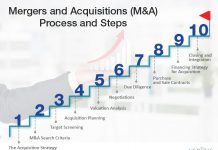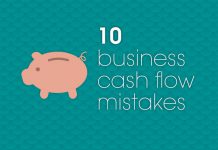In simple words, business metrics is the collection of relevant and meaningful business data that can help you take informed decisions to grow your business. Some people call it KPI (Key Performance Indicators) or analytics.
Depending on the nature of your business there could by 100s of KPIs you can track but I would definitely not advice to waste time on monitoring too much data. Business owners have already too much on their plate and big words like these only make them frown.
However, collecting, analyzing and using the right data can help us make smarter business decisions about our time, our budget and our team. We’ve seen it with our own successes. We need to get to a point where we can treat our efforts — marketing channels, product features, team hours — as levers; when we push or pull one, we know what result to expect. We can’t depend on luck; this will be the only way to make business growth systematic.
Here is a list of 6 key metrics every successful business track without thinking but most small business ignore or procrastinate.
1) Cost Of Acquisition (CoA)
If you have a business, you need customers. You need to find these customers and persuade them to buy your product or service. This is called customer acquisition and generally it costs money. Advertising & Marketing costs are increasing day by day and investing in wrong marketing channel can badly affect profit margins of your business.
So, how to calculate cost of customer acquisition? Its very simple, take a look at below formula:
Cost of Customer Acquisition = Total Sales & Marketing Cost / Number of New Customers Added
Lets say, you spent Rs. 50,000 on sales & marketing and got 10 new customers on board, so the average cost of acquisition will be Rs. 5,000. This is overly simplified example. In reality, you should consider all the hidden costs such as salary of your sales team, phone bills, internet bill or any other expense that goes into making a sale.
Its also possible that every customer is paying different amount for your product or service. So, use the term ‘average’ with an intention to get meaningful insights.
If you are running multiple marketing campaigns, you should track the customer acquired during each campaign. This might not be as easy as it sounds as you will have to track the source of every customer. You might find it cumbersome to get this data but it will be worth the effort.
Why track cost of customer acquisition? Well, in above example, if the cost of your product is Rs. 3,000 and you are spending Rs. 5,000 to acquire new customers, you are clearly making losses.
This business metrics will also help you understand which marketing channel is working for you and helping you generate more profit.
2) Monthly Recurring Revenue (MRR)
According to the definition on WikiPedia, revenue or turnover is income that a company receives from its normal business activities, usually from the sale of goods and services to customers. Companies usually calculate and report revenue for a quarter or a year.
Monthly recurring revenue is the amount of revenue you expect to receive every month. Idea is not to track how much you are gaining or losing, the real question we are trying to answer here is “Will that revenue be here tomorrow?”
We should focus on building a sustainable business and thats why tracking MRR is very important. Cash flow is a lifeline of any business and it must be positive.
You don’t need fancy tools to track this number. A simple excel sheet is good enough.
3) Expense By Category
We all know the importance of tracking business expenses, but its really surprising that most business owners consider only the large expenses like purchase of raw material or appliances. I know a startup owner who used to order pizzas for his small team every Friday. It was a nice ritual to unwind from a hectic week. During tax filing time, he collected all the bills for previous year and shocked to see that he had spent more than Rs. 50,000 only on Pizzas! Small expenses are easy to ignore but they can affect the profit margin if not controlled.
Right from the day 1 of your business, you should track every small expense like travel, phone bill, Tea/Coffee bills, expenses incurred during recreational activities and so on. Apart from big ticket purchases and marketing expenditure, all small things like these matter in a long run. Track spends in every category and try to minimize it every month.
4) Highest & Lowest Selling Product/Service
In every business there are certain products or services that sell well as compared to other items. These top selling products fetch the major chunk of total MRR and make business owners happy. So happy that they ignore the less popular products and miss the opportunity to improve them.
So rather than focusing only on collective sales of all the products, business owners should track sales of every individual product or service. If something is selling well, we should know why. We should ask customers why they preferred that product and what made them take that decision. Answers to these questions will help you improve the lesser selling product/service.
If you are using a good accounting software, this process can be automated. Most software today give one-click access to the reports that give intelligent data about the product sales.
5) High Value Customers
High value customers are the customers that keep coming back and buy your product. They are the advocates of your product/service and sometimes help you get more customers through reference. In some businesses, retaining customers determines the future survival of the business.
If you track and keep an eye on your high value customers, you are more likely to succeed in your business. You can take measures to nurture them so that they give you consistent business over the period of time.
They will also be happy to provide you testimonials which you can use to persuade new customers. Its also easier to upsell to these type of customers. This important business metric will help you to grow your business in a methodological way.
6) Staff Productivity.
Measuring the staff productivity is important for obvious reasons. An under-utilised staff is a liability to your business. Having trust or perception without any supporting data that the staff is hard working can be deceiving and surely not a good sign of a successful business. From receptionist to your highly skilled engineer, you should track productivity of everyone.
Idea here is not to become a police but to find the opportunities to improve utilisation of available resources.
So what should be tracked and how to track? First, find a way to assign roles and responsibilities. You can use any task management tool for this. Some business use sophisticated project management software designed specially for their industry. Every staff should have objectives or tasks and a timeline associated with that goal.
If your receptionist is spending entire day on phone calls, you should track the type of calls. For example, how many of them were sales calls or support calls. Later you can dig deeper and find out if there are repeated support calls. If that is the case, you can build a knowledge base to answer common questions.
A software company track how much time was spent on development and defect fixing. You can apply same principle to track sales team’s performance. You will not only know what is going on in your business but will also find opportunities to save time which can be used for more productive work.
Conclusion
Instead of spending time in tracking lot of KPIs you can get the better results by tracking selected few. I’ve listed these business metrics based on the feedback we receive from our customers which are mainly small businesses.
Remember, you can’t control what you don’t track.



















